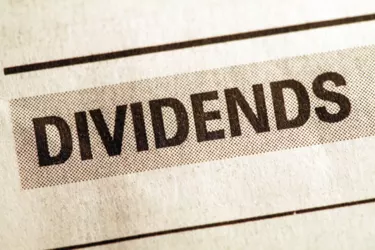
One of the boxes on the statement from almost every mutual fund is a listing for year-to-date -- YTD -- dividends. As fund statements are sent throughout the year with a dividend-paying mutual fund, the amount in the box increases. The YTD dividends can be a significant portion of the fund's total investment return.
YTD Dividends
Video of the Day
YTD is an acronym for year-to-date. YTD dividends are the amount your mutual funds shares have paid into your account so far this year. Investment dividends are tracked on an annual basis and must be reported on your taxes as income. The YTD dividends you see each time you receive a fund statement gives you an idea how much you have earned so far and allow you to project the total dividend earnings for the year.
Video of the Day
Dividend Frequency
The typical dividend frequency for a stock mutual funds is quarterly, or four times a year. Dividend paying stocks often pay quarterly so it makes sense for the mutual funds to follow the pattern. If you receive a fund statement every quarter, the dividend increase YTD should match the dividend earned for the quarter. Bond funds usually pay monthly dividends. A quarterly statement from a bond fund will have the YTD dividends increase by the last three monthly dividend payments compared to the YTD dividends on the previous statement.
Reinvesting Dividends
Mutual funds allow investors to reinvest earned dividends into more shares of a fund. Reinvested dividends buy more shares which pay dividends, so the amount of the regular dividend payment will increase over time.Compare the YTD dividend amount on your most recent fund statement with the statement from the same period one year ago. The increase in the YTD dividends will be at least partially the result of reinvesting the earned dividends.
End-of-Year Fund Statement
The YTD dividend amount on the first statement you receive after the end of the year will be your total dividend earnings for the year. Retain this statement for your records to keep track of dividends for tax reporting. The year-end statement will also be helpful when you sell mutual fund shares and you must calculate the average cost for the sold shares. The year-end dividends give you a picture of how much your fund pays on an annual basis.